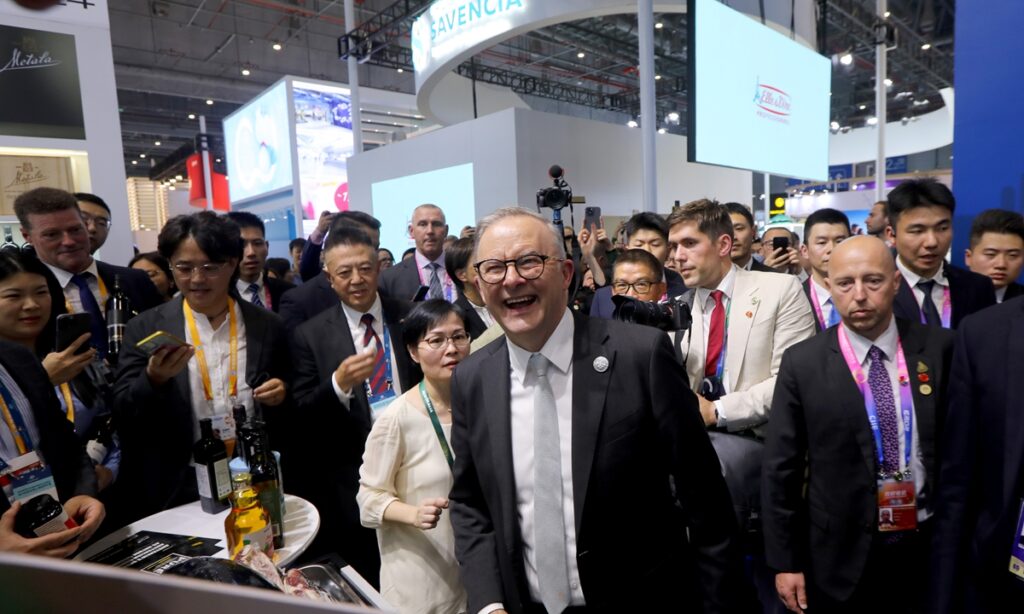Trade between China and Australia reached $189.88 billion from January to October, up 4 percent year-on-year, according to statistics from the General Administration of Customs (GAC).
China’s imports from Australia rose 8.4 percent year-on-year, according to the GAC. Australia accounted for 3.9 percent of China’s total foreign trade, up from 3.5 percent in 2022.
Imports from Australia accounted for 6.1 percent of China’s total imports, and the figure increased from 5.3 percent last year, according to GAC.
The latest figures mean that bilateral trade has warmed after a cold spell, indicating that China and Australia have the common willingness to seek pragmatic cooperation that will benefit both peoples.
On Tuesday, China and Australia published a joint outcome statement of the China-Australia prime ministers’ meeting. The leaders of the two countries agreed to continue and expand contacts in areas such as political dialogue, bilateral trade, energy, fighting climate change and expanding people-to-people exchanges.
To facilitate the movement of people, the two nations agreed to offer three- to five-year multiple-entry visas for tourists and businesspeople on a reciprocal basis, read the statement.
Australian Prime Minister Anthony Albanese’s visit to China – from Saturday to Tuesday – is seen as a symbolic event for China-Australia economic and trade exchanges. Albanese also attended the 6th China International Import Expo (CIIE) in Shanghai.
This is Albanese’s first visit to China since taking office and the first visit by an Australian prime minister since 2016.
Albanese said on Monday in Beijing to journalists that “the trade fair (CIIE) yesterday was a real highlight… What it shows is that trade is about Australian jobs…. A government has created, on our watch, over half a million jobs under our first half of the term, more jobs created in our first term already than any previous new government in Australia’s history since Federation.”
China is Australia’s most important trading partner, accounting for more than 25 percent of Australia’s exports, more than the next three trade partners – the US, South Korea and Japan – combined, and one-quarter of the country’s jobs depend on trade, said Albanese.
“Stabilizing our relationship means more trade and more jobs in both our countries. Our approach has been patient, calibrated and deliberate,” Albanese wrote on social media platform X, formerly known as Twitter.
The high-quality pragmatic and fruitful results from the Australian leader’s visit to China is in line with expectations, especially reflected by growing trade momentum, Zhou Fangyin, professor at the Guangdong Research Institute for International Strategies, told the Global Times on Tuesday.
Zhou expected the momentum to continue with close cooperation in key fields such as wine, education, tourism and other sectors.
Albanese’s visit along with the largest Australian business delegation to China is indeed the “most crucial in terms of Australia’s future,” Yu Lei, professor at Shandong University, told the Global Times.
Analysts said that China is an irreplaceable market for Australia, in particular, the agricultural sector. Prior to Albanese’s visit to China, the two countries held friendly consultations on WTO disputes concerning wine and wind towers and reached a consensus on proper settlement.
The Australian side ruled that there was no security risk in the lease of Darwin Port by Chinese companies, giving the green light for Chinese companies to continue operating the port.
(Global Times)




